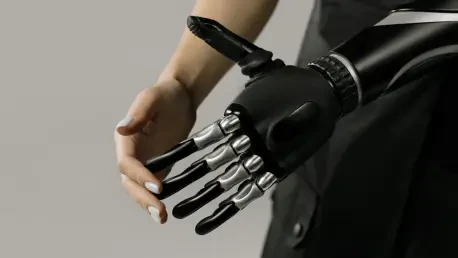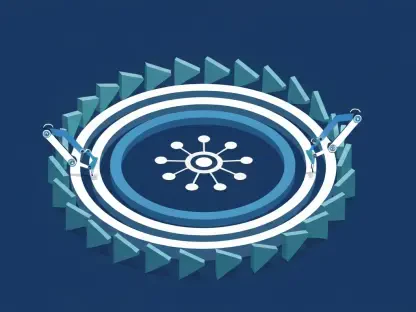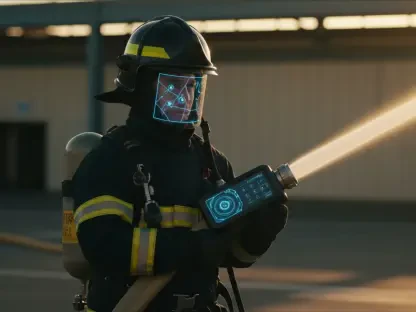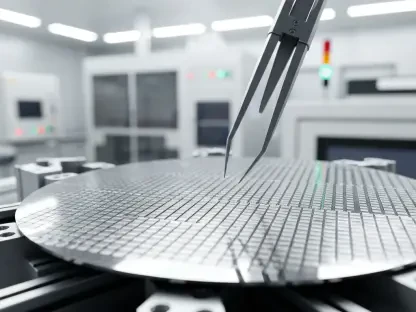Advancements in robotic technology have consistently pushed the boundaries of innovation, yet replicating the intricacies of human touch remains one of its most fundamental challenges. Enter the F-TAC, a bio-mimetic robotic hand developed in collaboration by researchers from Peking University, the Beijing Institute for General Artificial Intelligence, and Queen Mary University of London. This development marks a breakthrough, bringing robots closer to achieving human-like tactile capabilities, a game-changer for real-world robotic applications requiring sensitive and detailed manipulation.
The journey of replicating human touch in robotics has been driven by the need for robots to perform complex tasks that were traditionally reliant on human dexterity. Grasping and manipulating objects, often overlooked, demand a seamless integration of sensory feedback. The F-TAC hand meets this demand by closely mimicking the somatosensory processes of the human hand, enabling it to process and respond to tactile data in real-time. This ability enhances its precision and adaptability, setting a new standard for bio-mimetic technologies worldwide.
A Deep Dive into Bio-Mimetic Technology
At the heart of the F-TAC hand’s innovative prowess lies its sophisticated tactile sensing integration. The hand is equipped with 17 high-resolution sensors covering the majority of its palm, providing a spatial resolution on par with human skin. This intricate network allows for detailed tactile feedback, crucial for delicate manipulation tasks. The sensors work together to give the hand the spatial awareness necessary for executing precise and sensitive tasks, addressing fundamental limitations of previous robotic models.
The integration of real-time processing algorithms further sets the F-TAC hand apart. These algorithms enable the robotic hand to dynamically adapt its grasping strategies, mimicking the human ability to switch between various grasp types swiftly. This adaptability is bolstered by probabilistic algorithms, which allow the hand to process environmental feedback and choose the appropriate grasp type in milliseconds. The seamless integration of these technologies allows the F-TAC hand to perform complex manipulation tasks with remarkable efficiency.
Innovations Shaping the Future
Recent innovations in the field have expanded the potential applications of bio-mimetic robotic hands, ushering in new trends and possibilities. The development of the F-TAC hand has synthesized cutting-edge research from multiple disciplines, resulting in a robust piece of technology capable of handling an array of tasks previously deemed challenging for robotic systems. This convergence of tactile sensing and intelligent algorithms lays the groundwork for more refined iterations and emerging trends in robotic hand design.
The implementation of the F-TAC hand has given rise to notable shifts in industry behavior, with increased interest from sectors demanding high-precision operations. Its ability to replicate human touch positions it as a valuable tool in diverse settings, from medical procedures and aerospace technology to everyday consumer electronics. These advancements embody a broader industry movement towards creating more autonomous and capable robotic systems capable of real-world deployment.
Real-World Applications and Implications
The F-TAC hand’s touch emulation capabilities have translated into numerous real-world applications across various industries. For instance, in the medical field, the hand’s ability to maneuver delicately during surgical procedures holds promising implications for improving surgical outcomes. Similarly, its use in aerospace—where precision and adaptability are crucial—demonstrates the versatility and range of applications available to this technology. As the demand for precision in technology increases, the F-TAC hand’s introduction signifies a step toward robots that can seamlessly integrate into complex human environments.
Furthermore, its use in emergency response scenarios highlights its adaptability and potential in high-stakes situations. The hand’s enhanced grasping capabilities ensure that tasks are completed accurately and efficiently, crucial in contexts where time and precision are of the essence. These varied applications underscore the transformative potential of the F-TAC hand in diverse sectors reliant on detailed and sensitive manipulation techniques.
Current Challenges and Developmental Hurdles
Despite its promising capabilities, the F-TAC hand does face hurdles that may affect its widespread adoption. Technical challenges, such as the need for more efficient processing power and improved sensor durability, remain areas of active investigation. Additionally, market and regulatory barriers could influence the hand’s commercial viability and accessibility. These challenges call for further research and collaboration across industries to refine and enhance the hand’s functionality.
Nevertheless, efforts to overcome these limitations continue to accelerate. Researchers are focusing on integrating the hand with broader robotic systems, enhancing its interoperability and robustness. By addressing these technical and market-related challenges, the trajectory toward realizing the full potential of bio-mimetic robotic technology appears favorable.
Future Trajectories and Emerging Opportunities
Looking ahead, the journey of the F-TAC hand embodies a significant stride toward achieving truly intelligent robotic systems. The development of somatosensory interaction paradigms and further integration of intelligent control systems promise to elevate the functionality of robotic hands to even greater heights. As efforts continue to bridge the sensory and control aspects of robotics, the potential for breakthroughs increases.
The pursuit of general artificial intelligence could see robots equipped with not only perceiving but also physically interacting with the world in increasingly human-like manners. The ongoing research and development in this field indicate a future where robots are integral parts of daily life, equipped with dexterity and adaptability unmatched by today’s standards. The F-TAC hand stands as a testament to this evolving paradigm.
Final Thoughts and Reflections
In conclusion, the F-TAC hand emerged as a pivotal advancement in the field of robotics, demonstrably enhancing the capabilities of robotic systems. Its successful integration of tactile sensing and intelligent control not only addressed longstanding challenges within the industry but also paved the way for future innovations. The hand’s implementation signaled a broader shift toward robots capable of performing complex tasks with human-like precision and dexterity. By revolutionizing the way societies perceive and interact with robots, the F-TAC hand has catalyzed further exploration and development within this dynamic and rapidly evolving field.









